Excel 2007 -
Using What-If Analysis

Excel 2007
Using What-If Analysis


/en/excel2007/using-templates/content/
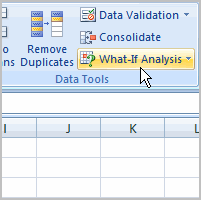 The real power in Excel lies in its ability to perform multiple mathematical calculations for you. One of the tools in Excel that you can use to perform these calculations is a Data tool called what-if analysis. What-if analysis allows you to see the effect different values have in formulas. Have you ever thought, "What interest rate do I need to qualify for to have a car payment of $400 on the car I want?" This question can be answered using what-if analysis.
The real power in Excel lies in its ability to perform multiple mathematical calculations for you. One of the tools in Excel that you can use to perform these calculations is a Data tool called what-if analysis. What-if analysis allows you to see the effect different values have in formulas. Have you ever thought, "What interest rate do I need to qualify for to have a car payment of $400 on the car I want?" This question can be answered using what-if analysis.
In this lesson, you will learn how to use a what-if analysis tool called Goal Seek.
Download the example to work along with the video.
You need a loan to buy a new car. You know how much money you want to borrow, how long of a period of time you want to take to pay off the loan (the term), and what payment you can afford to make each month. But what you need to know is what interest rate you need to qualify for to make the payment $400 per month. In the image below, you can see that if you didn’t have interest and just divided this $20,000 into 60 monthly payments, you would pay $333.33 per month. The what-if analysis tool will allow you to easily calculate the interest rate.
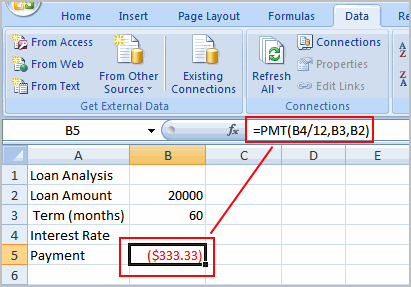
The formula that appears in cell B5 in the example image is a function. It isn't part of the what-if analysis tool, so you will need to understand functions thoroughly before you use what-if analysis. For the example scenario described above, you need a formula that will calculate the monthly payment. Instead of writing the formula yourself, you can insert a function to do the calculation for you.
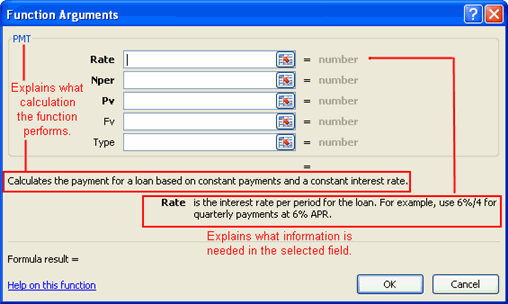
There are three What-If analysis tools that you can use. To access these, select the Data tab and locate the What-If Analysis command. If you click this command, a menu with three options appears.
Goal seek is useful if you know the needed result but need to find the input value that will give you the desired result. In this example, we know the desired result (a $400 monthly payment) and are seeking the input value (the interest rate).
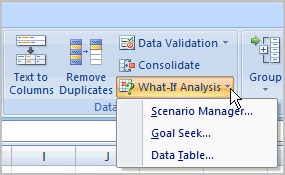
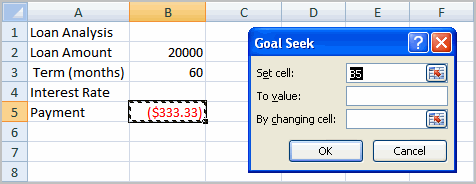
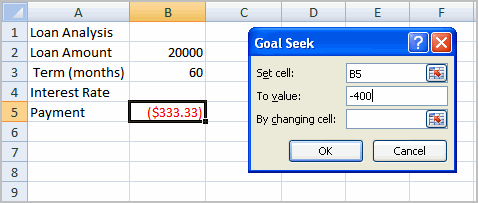

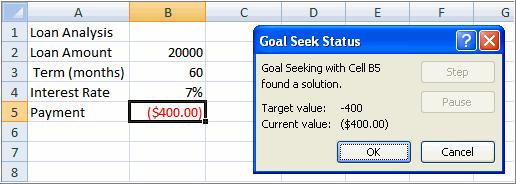
Use the Car Loan workbook to complete this challenge.
/en/excel2007/working-with-charts/content/